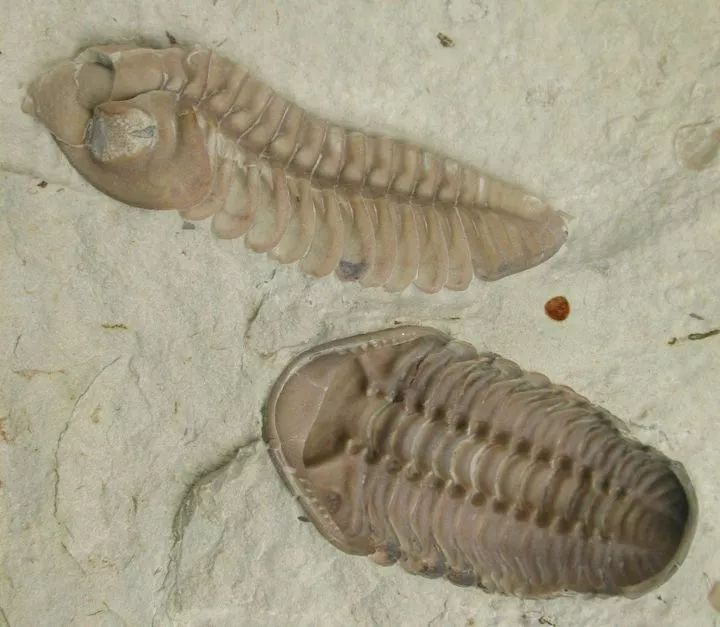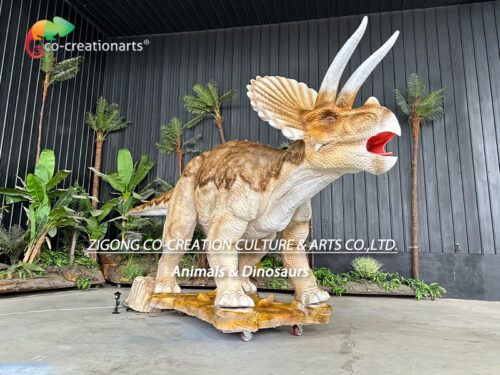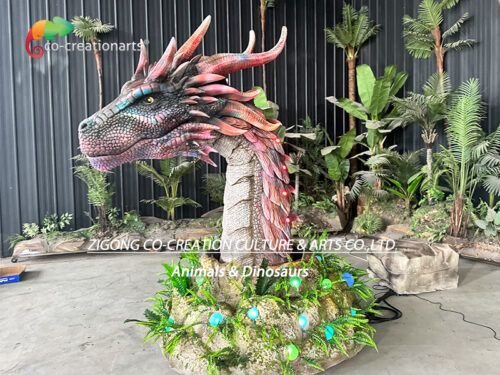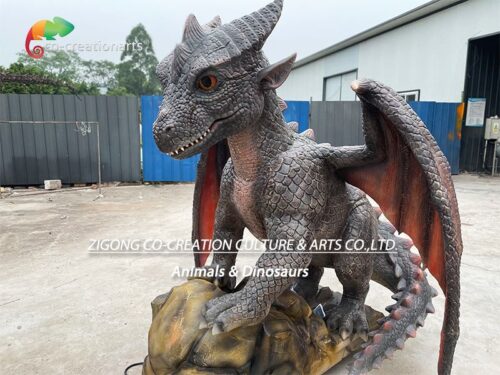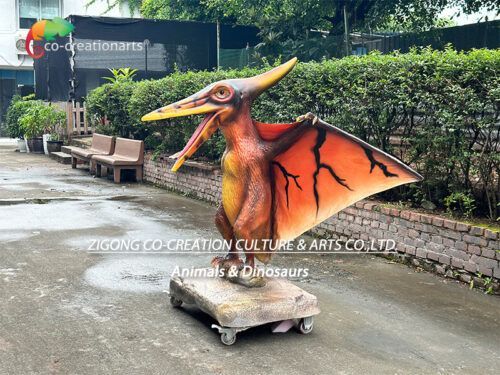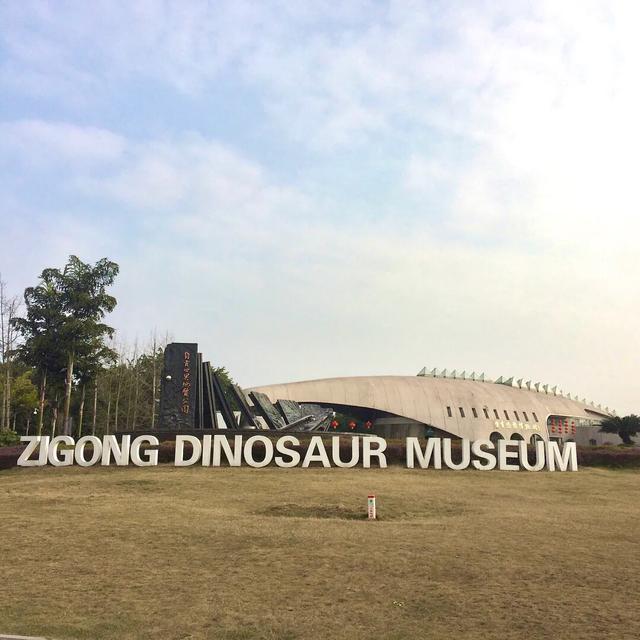
by artfty | Jan 6, 2023 | Paleontological Science

China News Net Nanjing December 31 (reporter Yang Yanci) Nanjing Institute of Geology and Paleontology, Chinese Academy of Sciences, learned Wednesday that the results of the 2021 Top 10 national science advances in geology and paleontology were released.
Nanjing Museum of Paleontology, Changzhou Museum, Fossil Net, Tianmu Geoscience Museum Space, Institute of Vertebrate Paleontology and Paleoanthropology, College of Paleontology, Shenyang Normal University, Liaoning Provincial Department of Natural Resources, Northwest University, Ningxia Hui Autonomous Region Geological Museum, Zigong Dinosaur Museum, Dalian Dinosaur Light Year Museum Co., LTD and other research institutes , museums, universities, cultural and creative enterprises led the completion of a number of geology and paleontology science achievements were selected.
The annual selection of the Top Ten Progress in National Science Popularization in Geology and paleontology is sponsored by the Science Popularization Work Committee of the Paleontological Society of China, with the purpose of promoting the national science popularization in paleontology, vigorously publicizing the knowledge of paleontology, enhancing the social influence of the communication of geology and paleontology science, and fully reflecting the important work progress made by the paleontological science education base in one year.
In this year’s selection, excellent achievements are recommended by members or units, and all members of the Science Popularizing Work Committee of the Paleontological Society of China vote to select the “Top Ten Progress in National Science Popularizing Geology and paleontology in 2021”.
The top 10 advances in national geology and paleontology science in 2021 are as follows: The Evolving Earth, Nanjing Museum of Paleontology, “Evolving Life” was selected as one of the top ten popular science works of “Dianzan ·2021 Popular Science in China”, “Journey from Dragon to Bird” popular science exhibition of Changzhou Museum, “The 9th National Conference of Fossil Lovers” of Fossil Net and Tiangu Earth Natural Museum Space, “Chinese Vertebrate Paleontology and Paleoanthropology Development History Exhibition” of Institute of Vertebrate Paleontology and Paleoanthropology, Chinese Academy of Sciences, and Shenyang Normal University Paleontology College and Liaoning Paleontology Museum Cretaceous “lotus” fossil special exhibition.
The other five are “Special Exhibition of Mass Extinction Fossils in the History of Earth Evolution” by Liaoning Museum of Paleontology and Liaoning Provincial Department of Natural Resources, “Integration of Science and Education Series of Geology and paleontology in primary and secondary schools” by Northwest University, “Vientiane Renewal” popular science exhibition by Geological Museum of Ningxia Hui Autonomous Region, “2021 China · Zigong Dinosaur Art Week” by Zigong Dinosaur Museum, and Dalian Dinosaur Light Years Museum explore “ Dinosaur Island”.
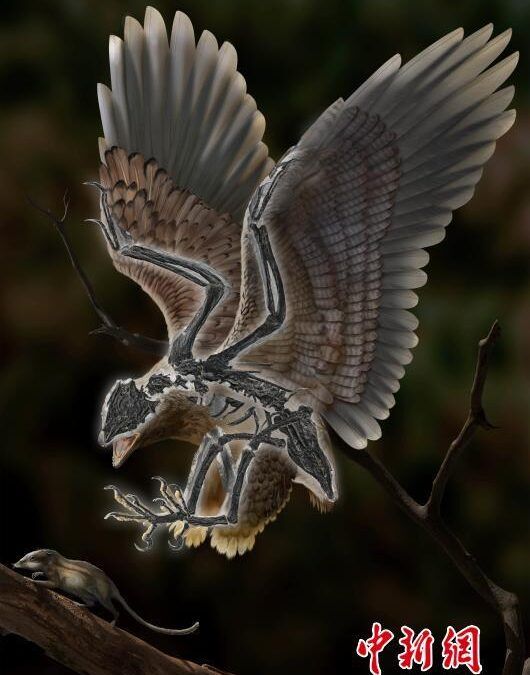
by artfty | Jan 5, 2023 | Paleontological Science
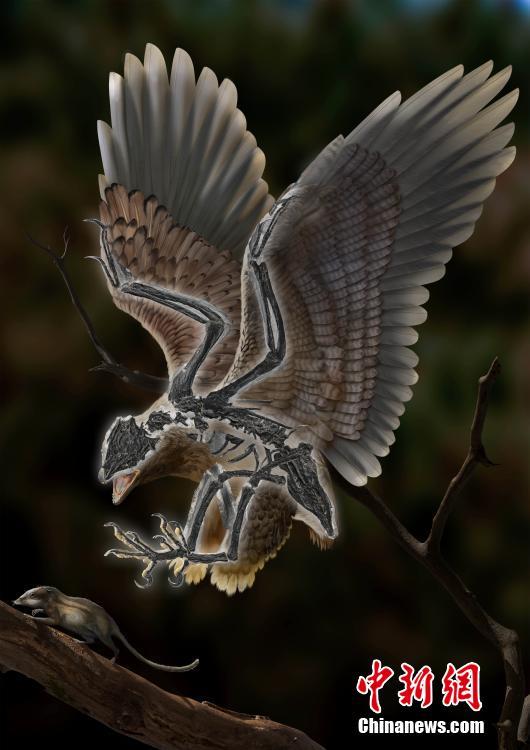
It has been a consensus that birds evolved from dinosaurs, and the evolution process of birds, especially how their skulls and bodies evolved independently, has long attracted much attention. Chinese scientists have discovered a new fossil of a basal bird species of the Femornithidae in the Jehelhe Biota (135-120 million years ago), a Cretaceous bird with a dinosaur skull and a strange body. They name it “cratonite Zhu” and reveal the adaptive evolution of the skull, scapula and monatarsus of early birds through in-depth study. Wang Min and Li Zhiheng of the Institute of Vertebrate Paleontology and Paleoanthropology, Chinese Academy of Sciences (CAS), co-authored the paper, which was published online on the night of January 2 (Beijing time) in the international journal Nature Ecology and Evolution. The picture shows restoration of craton and ravening Zhu. China News Service post Zhao Chuang cartography
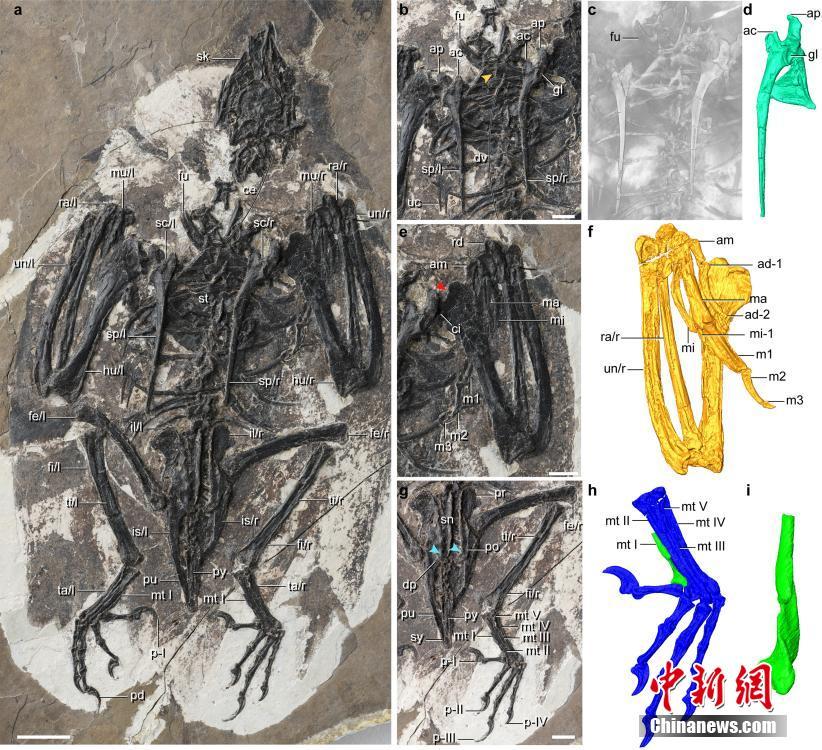
A specimen of clatonian sinisterite is shown here. China News Service Wang Min and Li Zhiheng
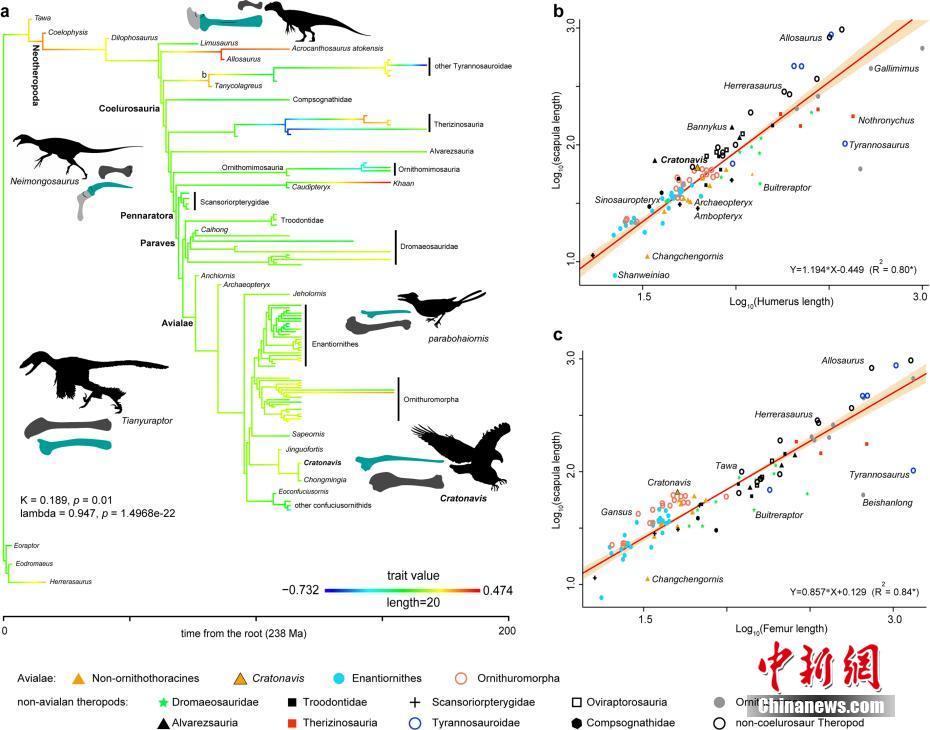
The picture shows the evolution of the scapula during the dinosaur-bird evolution. China News Service send Wang Min for photo
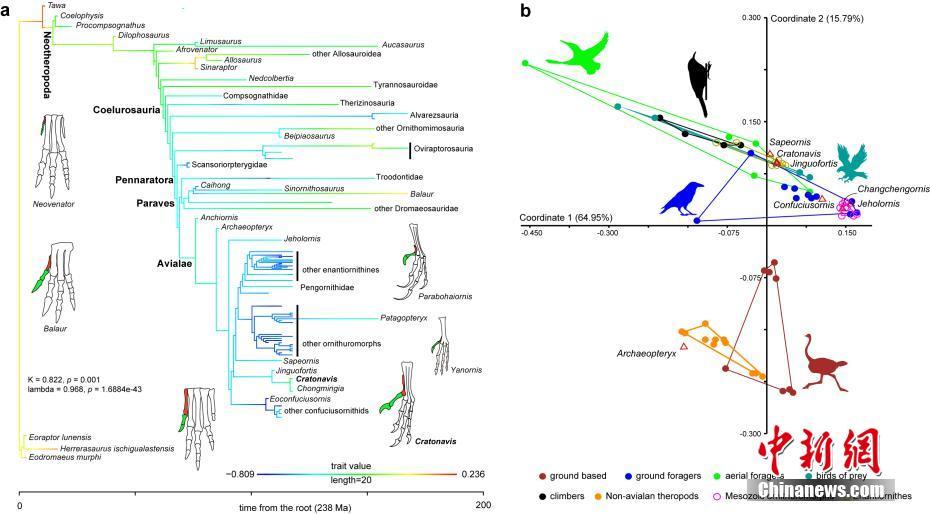
The picture shows the evolutionary path of the first metatarsal during the dinosaur-bird evolution. China News Service send Wang Min for photo
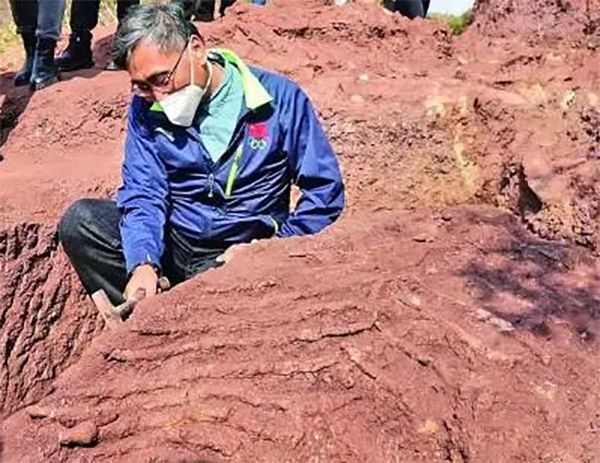
by artfty | Jan 5, 2023 | Paleontological Science

You Hailu, a researcher at the Institute of Vertebrate Paleontology and Paleoanthropology under the Chinese Academy of Sciences, excavates newly discovered dinosaur fossils in Lufeng, Yunnan province.
A pile of dinosaur bones is seen on a steep slope in Dinushan town, Lufeng City, Chuxiong prefecture, Southwest China’s Yunnan Province, Jan. 1, 2019. Only 3 meters wide on the platform, large and small dinosaur fossils lying in the red soil, canine teeth interlocking together, among them a thick femur and an oval abdominal ribs like a huge dandelion fan, clearly identifiable.
“There are fossils of three large, medium and small dinosaurs, belonging to the Early Jurassic sauropod group, about 190 million years ago, walking on two legs. Such a concentration of dinosaur fossils is rare in the world. The discovery of three dinosaurs at a time is a New Year’s gift for dinosaur researchers and enthusiasts.” You Hailu, the leader of the excavation team and a researcher at the Institute of Vertebrate Paleontology and Paleoanthropology of the Chinese Academy of Sciences, told reporters.
After days of drizzling rain, the excavation team set up a plastic shed at the site, where Yuhailu and four team members dug through the wet earth and carefully removed dinosaur fossils of varying sizes, which were fixed with glue and plaster. “The fossils should be treated against weathering after exposure, and the fossils should be sketched on site to retain first-hand research data. During the excavation, we will fix and pack the fossils, and send the fossil bags to the warehouse of Lufeng Dinosaur Fossil Science Exhibition and Education Base for storage, which will be kept for future restoration, research and erection.” Yuhailu introduced the fossils while sorting them out.
“The bones of the three dinosaurs are intact except for the skull fossils. A dinosaur was about 7 to 8 meters long, about 5 meters long and about 4 meters long. Judging from the shape of the three dinosaur bones huddled together, the three dinosaurs probably lived together and died suddenly. Said Wang Tao, a member of the excavation team and director of the Lufeng City Dinosaur Fossil Protection and Research Center.
Wang’s colleague, Dong Qixing, and two graduate students in paleontology at Kunming University of Science and Technology, Zhao Zhenchen and Chen Lirunxuan, are also on the mountain every day. The excavation team was supported by a large number of experts and scholars, including Wang Qiang, expert on dinosaur eggs, Feng Wenqing, Technical Department of Vertebrate Paleontology Institute, Wang Yaming, China Geological Museum, Zhang Xinnan, Beijing Museum of Natural History, Ren Xinxin, Chinese Academy of Geological Sciences, and Wang Gongfu, Chuxiong Paleontological Fossil Research Center, etc.
How were these 3 dinosaurs discovered after 190 million years of sleep? On June 17, 2022, Kunming Natural Resources Comprehensive Survey Center was surveying on a barren mountain 30 kilometers away from Lufeng County. Zhao Jianbo, an assistant engineer, suddenly found a stone in the sandy soil of a steep slope, which was suspected to be a dinosaur leg bone fossil. He immediately contacted Wang Tao to check the site, and Wang Tao quickly confirmed that it was a dinosaur leg bone fossil.
On December 28, 2022, the Department of Natural Resources of Yunnan Province announced in Dinosaur Valley of Lufeng City that the dinosaur fossils discovered in Chuxiong Prefecture in recent years will be excavated and protected by the Institute of Vertebrate Paleontology and Paleoanthropology of the Chinese Academy of Sciences. A total of nine dinosaur fossil sites will be excavated, including one dinosaur Mountain town in Lufeng City, two in Wande Town in Wading County, and six in Dazhuang, Damadi and Anlongbao towns in Shuangbai County.
According to Chen Jun, deputy director of the Yunnan Provincial Department of Natural Resources, the excavation of dinosaur fossils at the three sites was approved by the Ministry of Natural Resources on December 12, 2022. Most of the dinosaur fossils found this time are located on the slope, and the overall burial is shallow, and the shape of the bones is clearly distinguishable. Due to the severe weathering of the surrounding soil layer and natural phenomena such as rain erosion, some of the fossils have been exposed to the surface. It is urgent to carry out rescue excavation and effectively protect these national key conservation paleontological fossil resources.
Chuxiong Prefecture enjoys the reputation of “Kingdom of dinosaurs” and “storehouse of fossils”. This was once a haven for dinosaurs. Since the discovery of the first complete dinosaur skeleton fossil in 1938 in Shawan area of Lufeng County, more than 410 individual dinosaur fossils have been unearthed in the whole prefecture, among which more than 70 are in good condition, and a large number of dinosaur footprints have been found, especially those from the Early Jurassic. Currently, 14 species are known, accounting for 64% of the Early Jurassic dinosaurs in China. It is also one of the two best preserved sites of this period in the world (the other is South Africa).
According to the preliminary analysis of some dinosaur fossils uncovered so far, except for the dinosaur fossils in Dazhuang Town of Shuangbai County, which belong to the middle and late Jurassic period, the other eight sites belong to the Early Jurassic period. Among them, according to the fossils found in Wande Town, Wuding County, it is inferred that the local dinosaurs lived in the earliest Jurassic period, earlier than the dinosaur fauna represented by Lufeng Dragon in Lufeng Basin. The dinosaur fossil site to be excavated in Lufeng City is located in Chuanjie Basin, and the preliminary conclusion is that the newly discovered dinosaur has a large individual size, which will provide scientific basis for the comparative study between the dinosaurs in Lufeng Basin and the dinosaurs in Lufeng Basin, and further promote the in-depth study on the diversity, distribution and evolution of dinosaurs in Lufeng.
Then we will go to the Jinsha River Grand Canyon in Wuding County to excavate dinosaur fossils at two sites. After the Spring Festival, we will move to Shuangbai County, where there are more dinosaur fossils at six sites. We will finish the rescue excavation work in three counties in August.” “Wang Tao said.
“The excavation site in Wuding County may be the earliest site of dinosaur bones ever found in China.” “With the further excavation of dinosaur fossils, more and more detailed discovery, research, deduction and restoration will outline a more comprehensive existence of Early Jurassic dinosaur fossils in Yunnan, providing valuable scientific basis for the study of the origin and evolution of life,” Youhailu said.
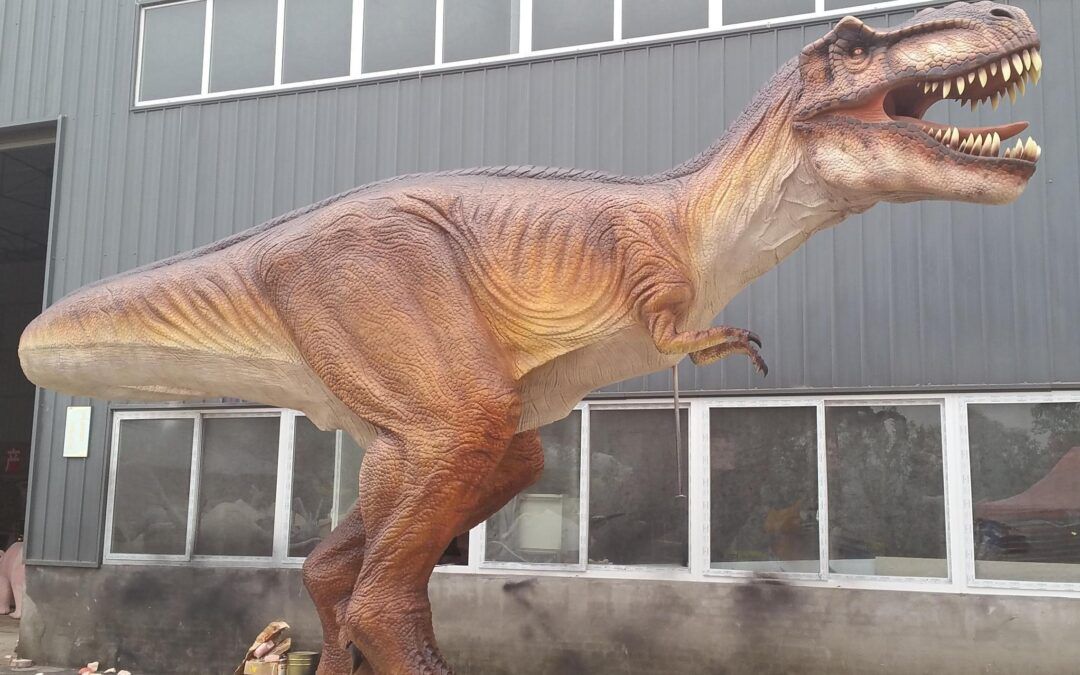
by artfty | Dec 19, 2022 | Paleontological Science
The full text of the report, titled “Ancestors of ‘vegetarian’ Dinosaurs actually liked Meat,” was published on Live Science on Tuesday.
It has long been thought that Tyrannosaurus Rex was a carnivore, while the pliosaurs quietly nibbled on leaves. However, the results of a new study suggest that dinosaurs had a far more diverse diet than previously thought.
To get a better idea of what different dinosaurs actually ate, paleontologists at the University of Bristol in the UK scanned the skulls of several dinosaurs — including the smaller alveodon and the long-necked Diplodocus, both of which are thought to be herbivorous — and created 3D models of their teeth.
Lead author Antonio Mayoral, a senior research fellow at the University of Bristol’s School of Earth Sciences, said: “Teeth can provide clear clues about what animals eat because they are the tools they use to break down food. Different tooth shapes can effectively handle different types of food.”
He added: “In dinosaurs, we see teeth in an amazing variety of shapes, from knife-like, conical, triangular, leaf shapes. This suggests that dinosaurs developed different feeding habits and a wide range of diets. What’s interesting is that many of these tooth shapes are present in the very earliest dinosaurs, suggesting that they may have always had a very diverse diet.”
In fact, the ancestors of plant-eating dinosaurs didn’t make themselves strictly “vegetarians.” Instead, they were likely to gorge on meat and insects, just as carnivorous dinosaurs would have preyed on them.
“This study is the first modern statistical demonstration that early dinosaurs explored different types of food and were ecologically diverse,” Mayoral said.
“Our results suggest that two of the three plant-eating dinosaur lineages were not originally herbivores,” he said. Sauropods, early relatives of Diplodocus and other large long-necked dinosaurs, transitioned from carnivores to herbivores during the Triassic. And the early ornithischian dinosaurs that formed the later Triceratops and Hadrosaurs probably preferred an omnivorous diet.”
The findings were published December 16 in the journal Science Advances.
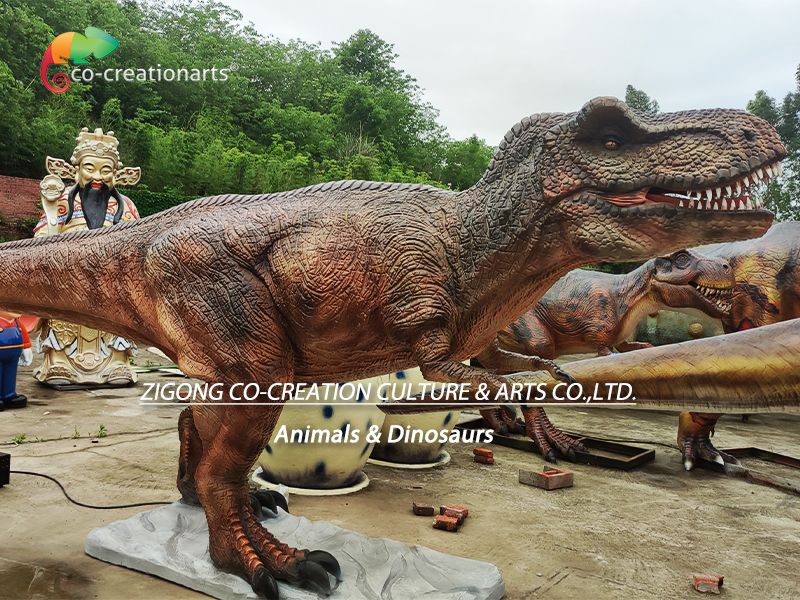
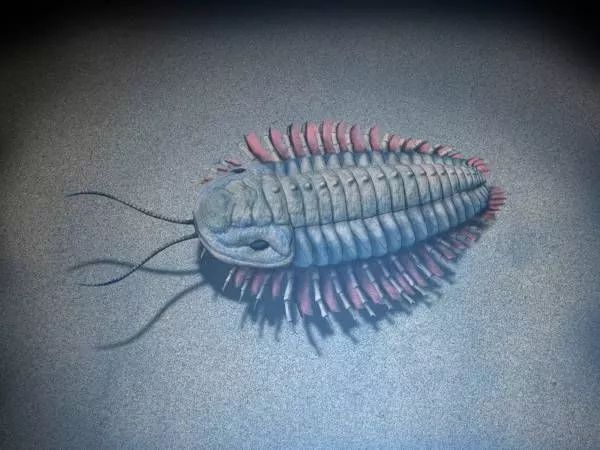
by artfty | Dec 15, 2022 | Paleontological Science
Shanxi Evening News (reporter Wen Lifang) Recently concluded the 2022 paleontological fossil resources survey project in Yangquan City, the investigation team found that the “caddis moth” in the villagers’ mouth is actually a trilobite fossil that lived in the Cambrian Period 520 million years ago, which is the oldest known animal fossil in Yangquan City.
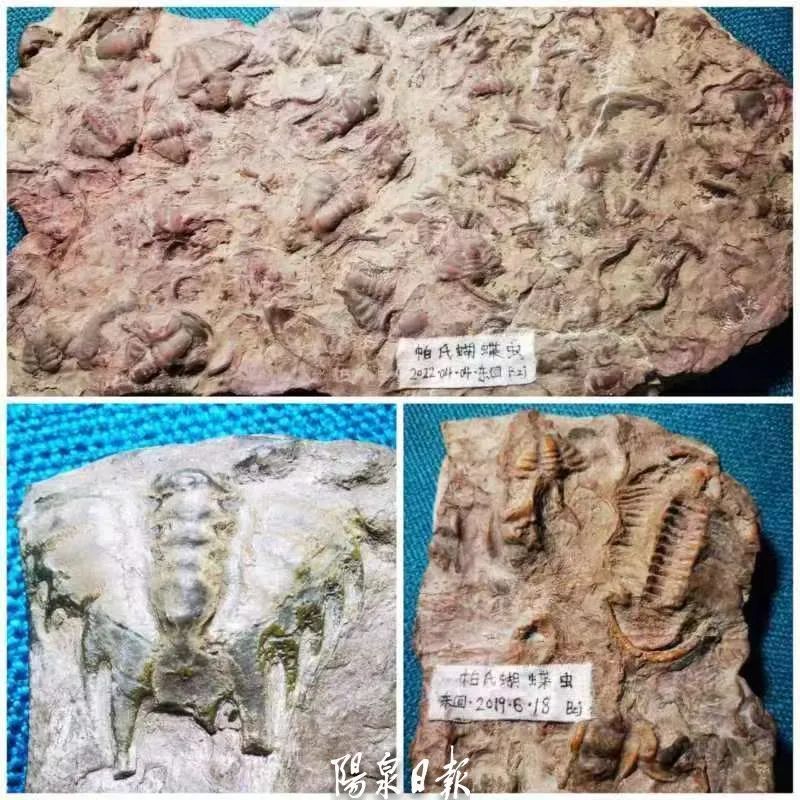
Yangquan City geological disaster prevention center staff, the city of paleontological fossil research field professional and technical personnel Bai Zhijun introduced, “the legend of the moth” in the eastern mountain villages of Yangquan City has a long history, many villagers in the mountain breaking stone occasionally found that the stone has a mysterious mark resembling a moth.
This year’s spring ploughing, Yangquan City, Pingding County Donghui Town Qieoncun Village several villagers saw geological personnel with geological hammer in the mountains to investigate, they told the staff about the “cstone moth” story: “When I was young and people together to build roads, in the stone to see a lot of stone moth moth, like a butterfly, is also strange, how can fly insects in the stone? They say it’s a caddis moth. I’ve met it twice in my life.” Another villager put it even more fanciful: “The old man used to say that caddis moths would fly away as soon as they were dug up, so it was hard to come across.”
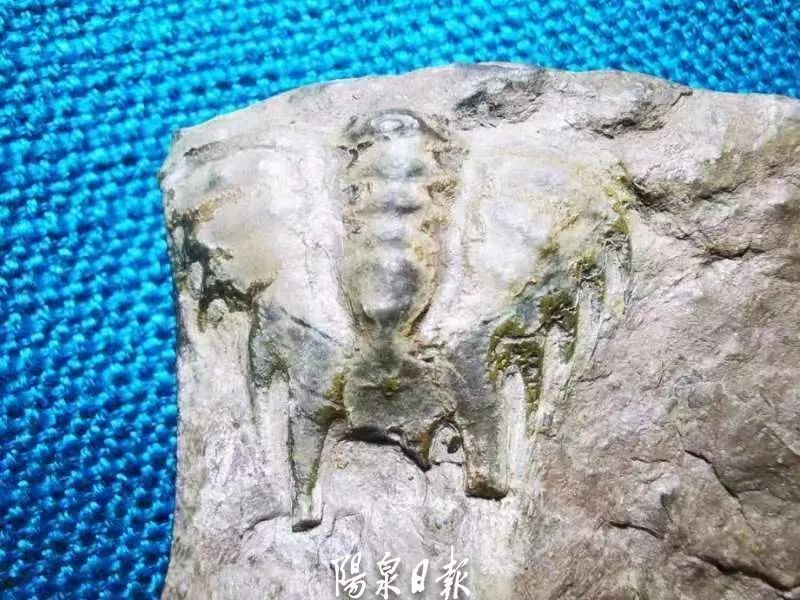
In this year’s investigation of paleontological fossils, the investigation team found many trilobite fossils in the microcrystalline limestone of the Cambrian Zhangxia Formation to Gushan Formation in Donghui Town, Pingding County. Most of the trilobite fossils were the debris left by the slough of trilobite growing in the coastal shoals. These trilobites have seven pairs of spines on their tail carapace, two of which are thick and long, and resemble butterflies, so experts named this trilobite butterfly butterfly. The investigation team communicated with the villagers with the trilobite fossils they found, and finally confirmed that the “caddis moth” in the villagers’ mouth was the fossil of the tail armor of this butterfly.

It is known that these trilobites lived in the ocean about 520 million years ago, which is one of the oldest known animal fossils in Yangquan City. It also reveals that the present Taihang Mountain was a Marine environment for trilobites to live in during the Cambrian period 520 million years ago. “These fossils can be found in Cambrian strata in many mountains in and around our province, but most of the strata are not well exposed or covered by late sediments, making it difficult to find these fossils,” Bai Zhijun told reporters. Yangquan is located in the transition zone between the Loess Plateau and the North China Plain. The Cambrian strata are relatively complete and easy to find fossils. The next step is to do a good job in the research and protection of paleontological fossils, and effectively develop and utilize this precious resource.”
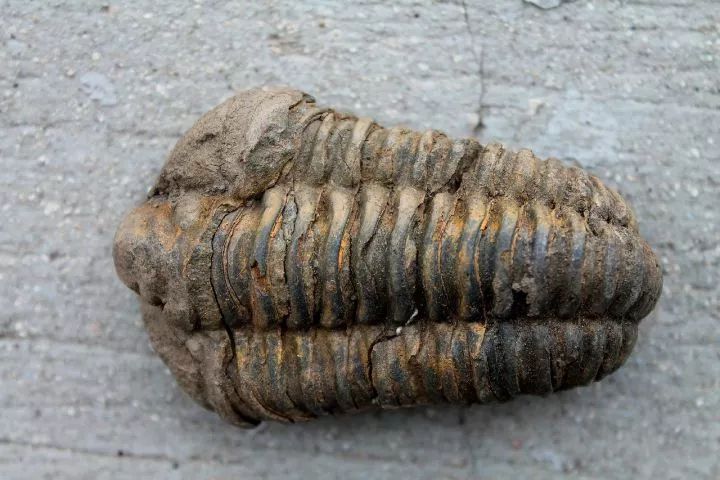
In the specimen storage room of Yangquan Municipal Bureau of Planning and Natural Resources, there is a complete trilobite abdominal pressure specimen with a length of 8.5 cm. After identification, this is a complete specimen of papillonella. Bai Zhijun said the “caddis” fossil found during the investigation is the same species as the papillonidae specimen collected in Yangquan City.
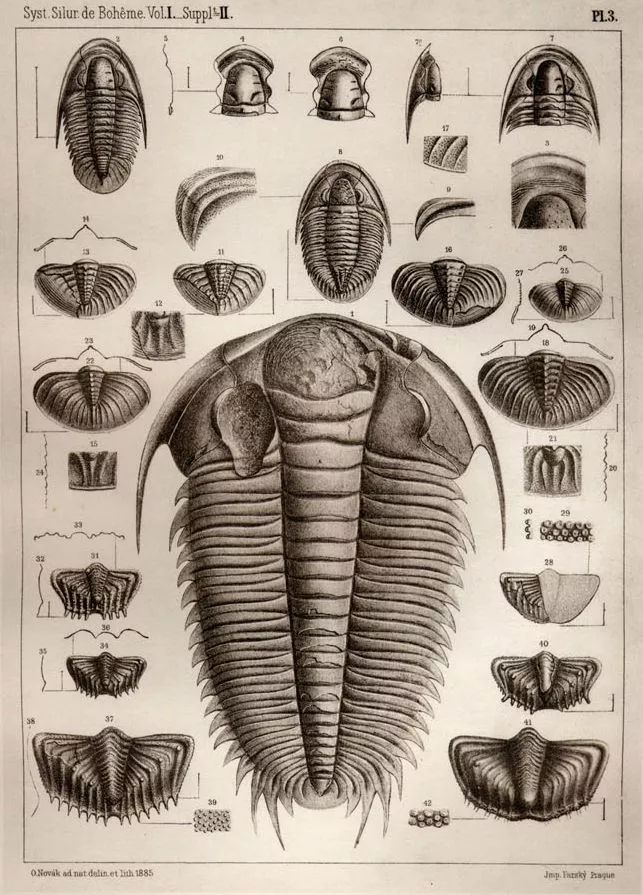
Director of Yangquan Geological Disaster Prevention Center Chen Jianguo introduced: “Since the discovery of trilobite fossils, we have recommended young scholars from Shanxi Institute of Engineering and Technology and other institutions to carry out geological research, geological practice and science popularization activities of paleontological fossils at the site where the fossils were found. In the future, on the basis of protecting the ecological environment and fossil resources, multi-departmental cooperation will further do a good job in cultural tourism and scientific popularization of Taihang Mountain.”
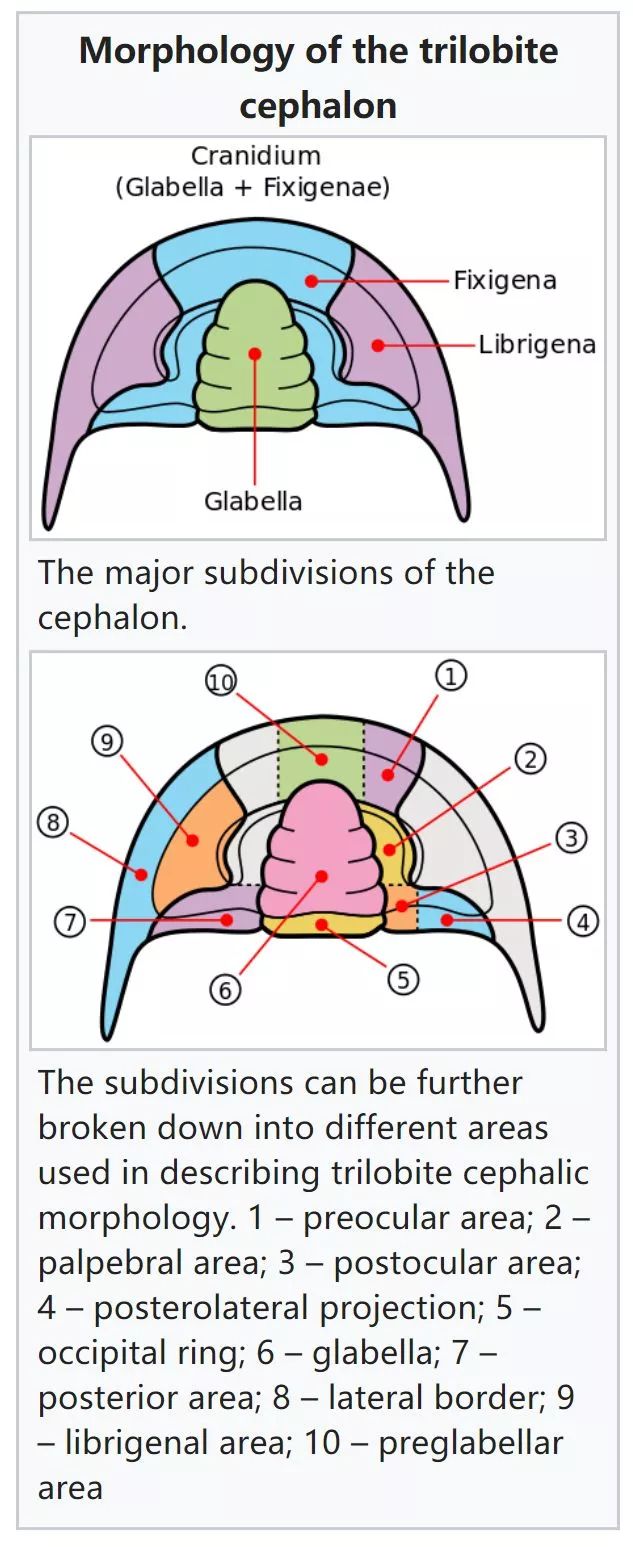
The rock that preserves trilobite fossils in the Zhangxia Formation to Gushan Formation of Yangquan Cambrian is called microcrystalline limestone, commonly known as Bian- stone. These rocks are the products of weak hydrodynamic force or still water environment, with relatively uniform stratification, and trilobite fossils are often sandwiched between the stratification. Microcrystalline limestone is a compact massive microcrystalline aggregate of limestone, the main chemical composition of calcium carbonate, is a sedimentary rock. It is known that in Shandong, there is a kind of inkstone called Duofu inkstone, and Yangquan City found trilobite rock is the same microcrystalline limestone, because the rock has another trilobite tail like bat, so named. Therefore, local experts propose to develop and utilize them, encourage craftsmen to design and make these stones, create colorful stone products, promote stone culture, and create new highlights for the cultural tourism of Taihang Mountain in our province.
